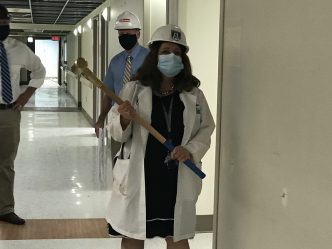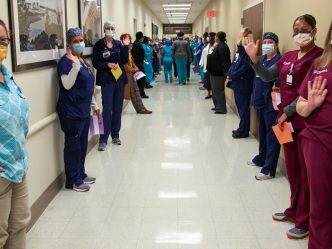The results from Georgia Regents Health System’s second Employee Engagement Survey are in, and senior leadership is very pleased.
“We’re actually seeing the fruits of the labor, that action planning has resulted in improvement,” said Susan Norton, Enterprise Vice-President, Human Resources. “We’ve made dramatic improvement in a very short period of time.”
The survey’s intent was to receive feedback from health system employees in order to better understand how they view the organization and then to prioritize those responses and engage in action planning with the goal of improving our employees’ experience with their work environment
It had been 12 years since an engagement survey had been conducted for the health system, and the 2013 results showed room for improvement, with the health system finishing in the 8th percentile of similar institutions nationwide.
Leadership viewed those numbers as an opportunity to move forward.
“From my perspective, I wanted to see this happen here in our organization because our personnel are our most important asset and I value the voice of every one of our employees,” said Steven Scott, Chief Operating Officer, Georgia Regents Medical Center.
In the past, he said, there was no systematized way to tap into our employees’ experience other than through anecdotal commentary or information gleaned from exit interviews. By that time, it was often too late to make changes.
“That’s why I thought it was important not only to establish a survey process here, but also to demonstrate to our employees that senior leadership is interested in their point of view as it relates to improving our collective work environment,” Scott said.
After just seven months of focused attention, the health system jumped from the 8th percentile to the 26th percentile nationally.
“According to our engagement consultant, this performance represents a significant jump compared to her other clients,” Norton said. “For us to have also gone from 3.81 to 3.99 on a five-point scale in just seven months of action planning is huge.”
Not only did the organization jump to the next quartile and improve from Tier 3 to Tier 2, every single item in the survey went up.
“Last year, we only had 17 units in Tier 1 (the highest tier), and this year, we have 40,” Norton said. “Last year, we had 62 in Tier 2, and we have 114 this year. And last year, almost two-thirds of our organization was Tier 3, and we’ve dropped that down to 39 percent.”
Survey results have been made available to the management team, and all employees should expect to be receiving their departmental results from their managers very soon.
According to Scott, this organizational progress should be encouraging to everyone associated with the health system.
“We look forward to continuing to improve until we’ve become a Tier I organization with the majority of our work units in Tier I as well,” he said.
 Augusta University
Augusta University



